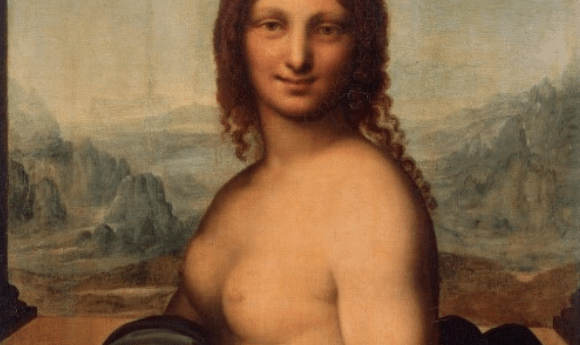Decoding da Vinci

A team of researchers has used proteomics to establish the paint blends used in a painting supervised by the notoriously secretive Leonardo da Vinci, bearing huge significance for restoration and validation of aged paintings.
With the changing attitudes of the philosophical classes in Europe throughout the late-14th and 15th centuries, the desire to depict spiritual, otherworldly figures in fine art, ethereal in beauty yet less representative of the actualities of light and form, shifted to a more scientific, ‘humanist’ outlook on painting. Known as the ‘Renaissance’, due to the rediscovery of philosophies and artistic techniques used in the times of Ancient Greece and Rome, art in this period began to reflect humanity from a more lifelike, grounded and human-focused viewpoint.
A key aspect of this new style of painting was the developing ability to accurately display depth and perspective. Artists frequently designed their own paints to enhance this capability. Chief among these was the great Renaissance master Leonardo da Vinci, famed for his fierce secrecy, who wrote all his notes in mirrored writing and maintained a constant paranoia that assistants and visitors were attempting to steal his ideas or gain insight into his work.
Now, 500 years since the death of the great master, an international team of Italian, Israeli and Russian scientists has used modern analytical techniques to decipher the combination of materials used to mix the paint applied to the ‘Donna Nuda’. This painting is thought to have been completed by an unaccredited student of da Vinci’s and is often referred to as the ‘topless Mona Lisa’, though the comparison draws considerable flattery to the Donna Nuda. While a fine example of Renaissance art, displaying the technical capabilities of artists of the time to impart perspective and depth, the painting lacks the subtleties of expression and character found in da Vinci’s Masterwork.
Unveiling the Donna Nuda
A key challenge of studying the painting’s materials was establishing how to gain an accurate and representative sample of the paint, without damaging or altering the image itself. To do this, the research team, led by Gleb Zilberstein (Spectrophon Ltd; Israel), used an ethylene vinyl acetate (EVA) polymer containing powerful anion and cation exchangers to create sections of film. These films were then applied to different sections of the painting, covering the body of the muse and the landscape in the background, for 60 minutes each.
Once the films were removed and the materials extracted from the painting, the research team reported noting the smell of a forest after rain, an odor released by the extraction process. The collected materials were eluted from the EVA films and analyzed by gas-chromatography/mass spectrometry and liquid chromatography/mass spectrometry.
-
Proteomics and “The Hitchhiker’s Guide to the Galaxy”: an interview with Grant Brown and Brandon Ho
-
Probing the proteasome
-
Can modern DNA sequencing solve history’s greatest murder mystery?
The secrets beneath the surface
Upon analysis, Zilberstein and his team found that a mixture of linseed oil and egg yolk, known as ‘tempera grassa’, was used throughout the painting. The paint used to depict the landscape in the background of the painting, however, also contained rosemary oil as a diluting agent. This component delays the drying of the paint leading to a less focused, hazy effect that imparts an aerial perspective and sense of distance to the landscape while drawing the focus of the painting towards the exposed belle at the center of the canvas.
“For the first time the deciphering of the recipes used by Leonardo was possible,” declared the authors. “Insights on the artistic technique employed by the Renaissance master were revealed.”
The researchers also established that the painting was covered with a glaze of conifer resin to protect the painting beneath. It is through microcracks in this resin that the researchers believe the EVA films were able to extract the tiny samples of paint used in the analysis.
21137
Restoring the Renaissance
The success of the study bears many implications for the restoration, validation and study of great works of art. Firstly, Zilberstein believes that the EVA film technique can be readily replicated to determine the age and authenticity of paintings. In a world where works of art are sold for vast sums of money – in 2017 another Da Vinci painting, ‘Salvator Mundi’, sold for $450 million – the validation of their authenticity could make or break some truly staggering sales.
Such a technique would also have been exceptionally useful for Pinin Brambilla Barcilon, who spent 20 years restoring the famed but unfortunate ‘Last Supper’ by da Vinci. This fresco, often considered the greatest rendition of this famed biblical event, was expertly painted onto a wall of the Santa Maria Delle Grazie (Milan, Italy). However, while the artistry and technical ability were exhalated at the time, the preparation and planning were flawed. The fresco was painted onto a wall suffering from damp and within 60 years the shocked expressions of the disciples, wracked by the news that one of them would betray their Christ, had distorted and blurred into unrecognizable mockeries of their former glory. Even a genius such as da Vinci was fallible at times.
Had Barcilon possessed the techniques demonstrated by Zilberstein and his team, the restoration may have been able to use the exact materials utilized by da Vinci. At the least, a deeper understanding of how best to treat the fresco would have been imparted.
Zilberstein hopes that this technique can be used in the future to assist the restoration of damaged or decaying paintings, helping preserve some of the great aged masterworks that continue to hold so much value in our modern world.